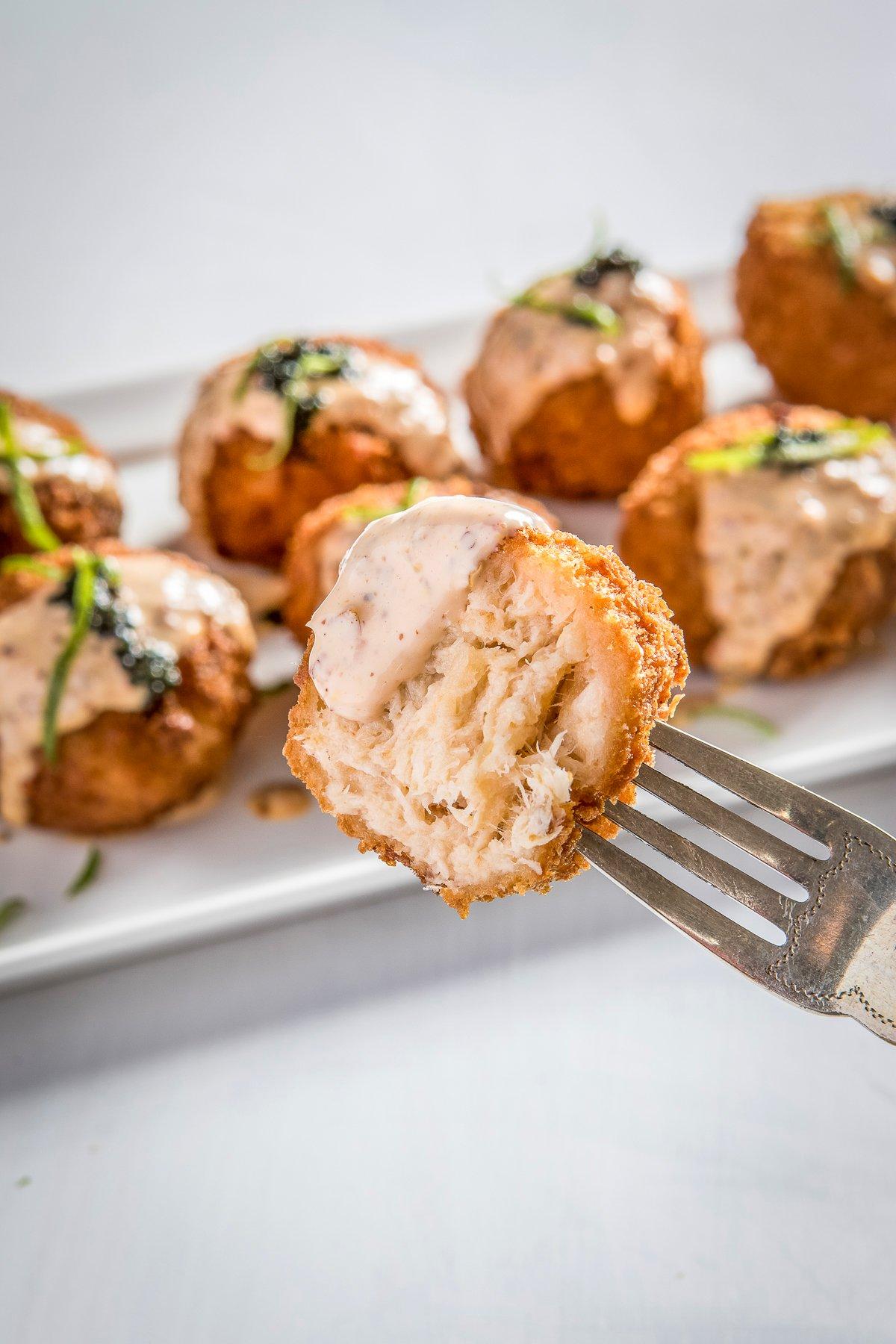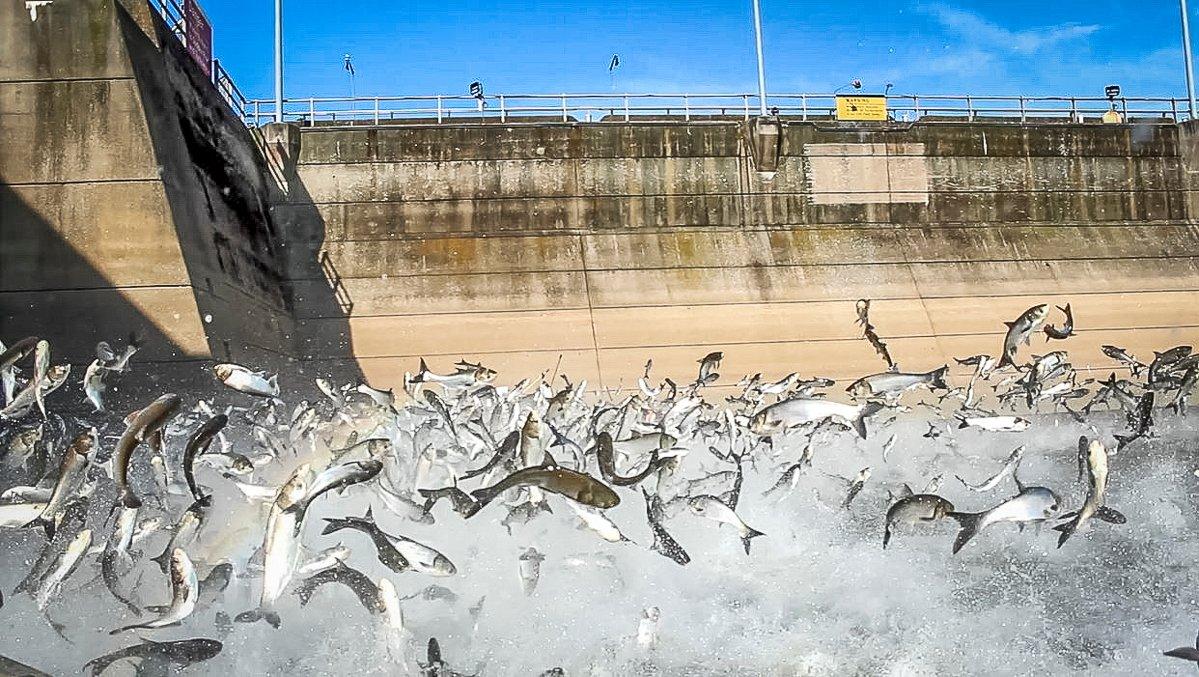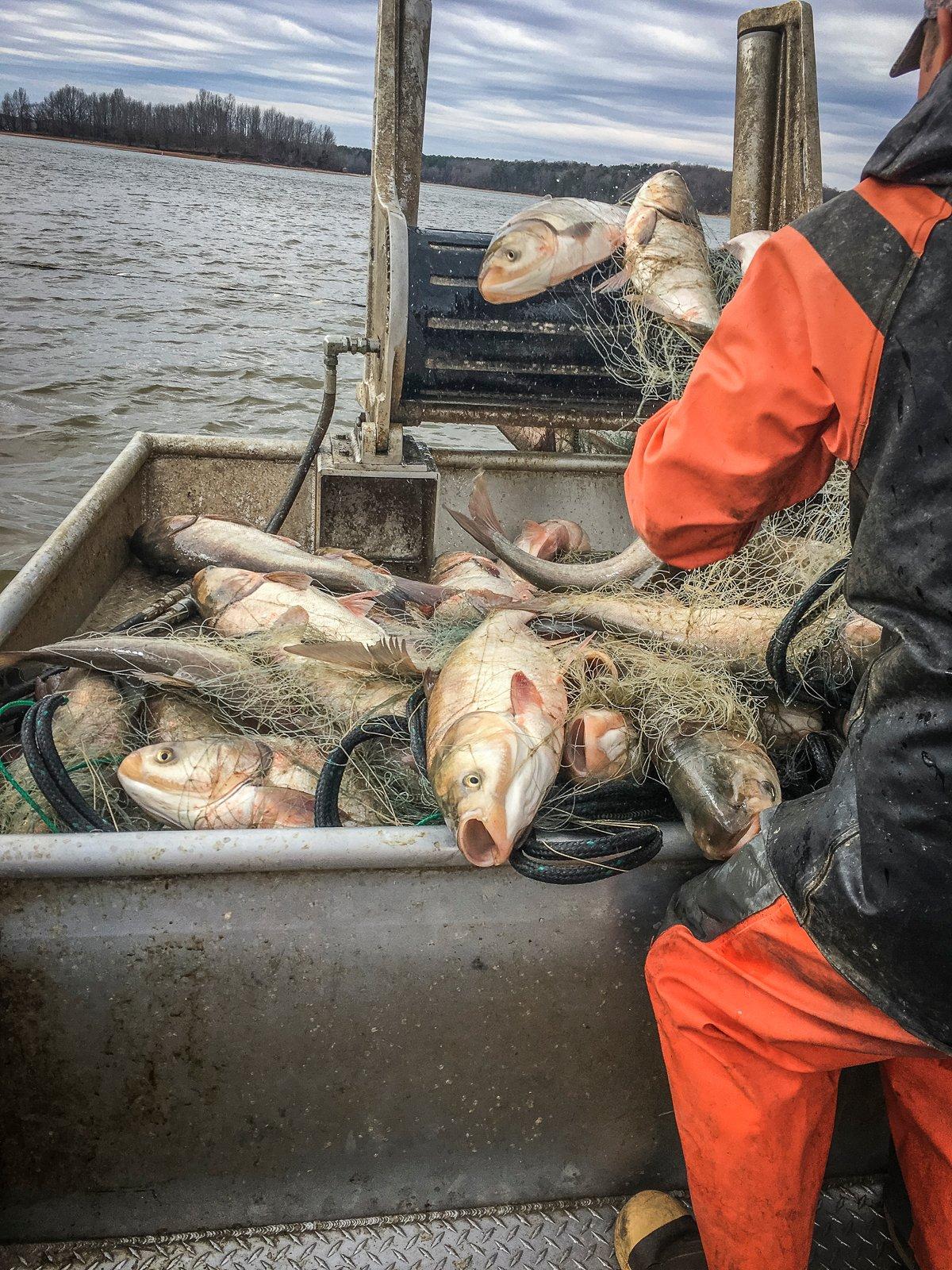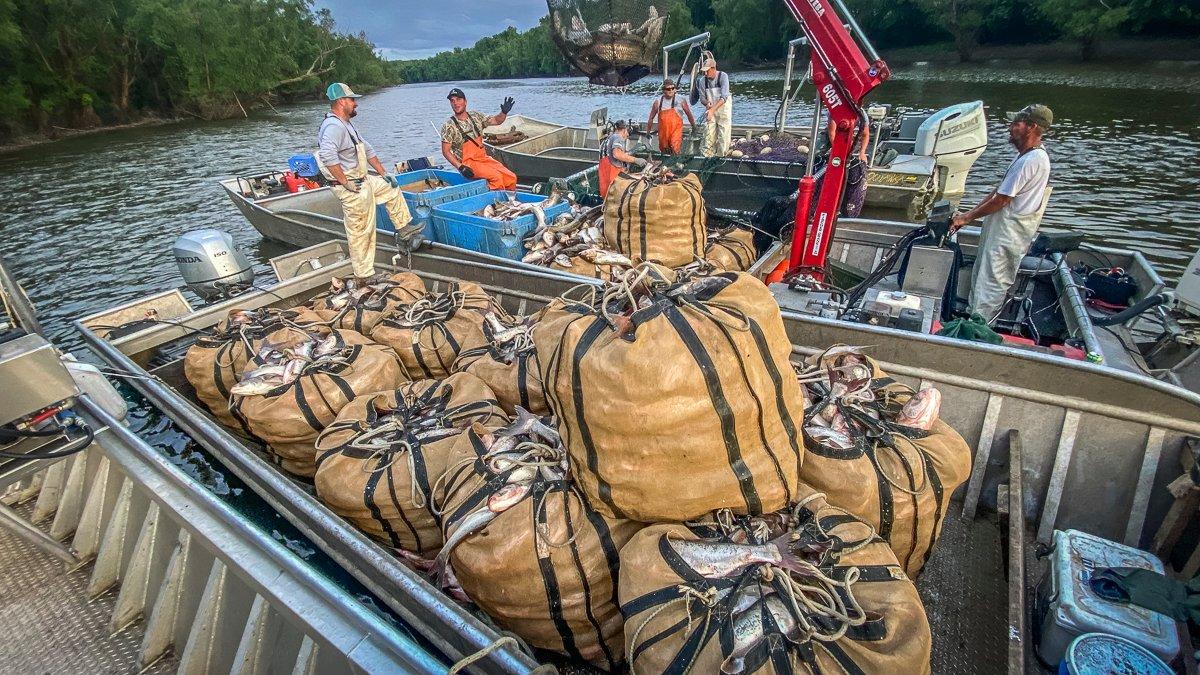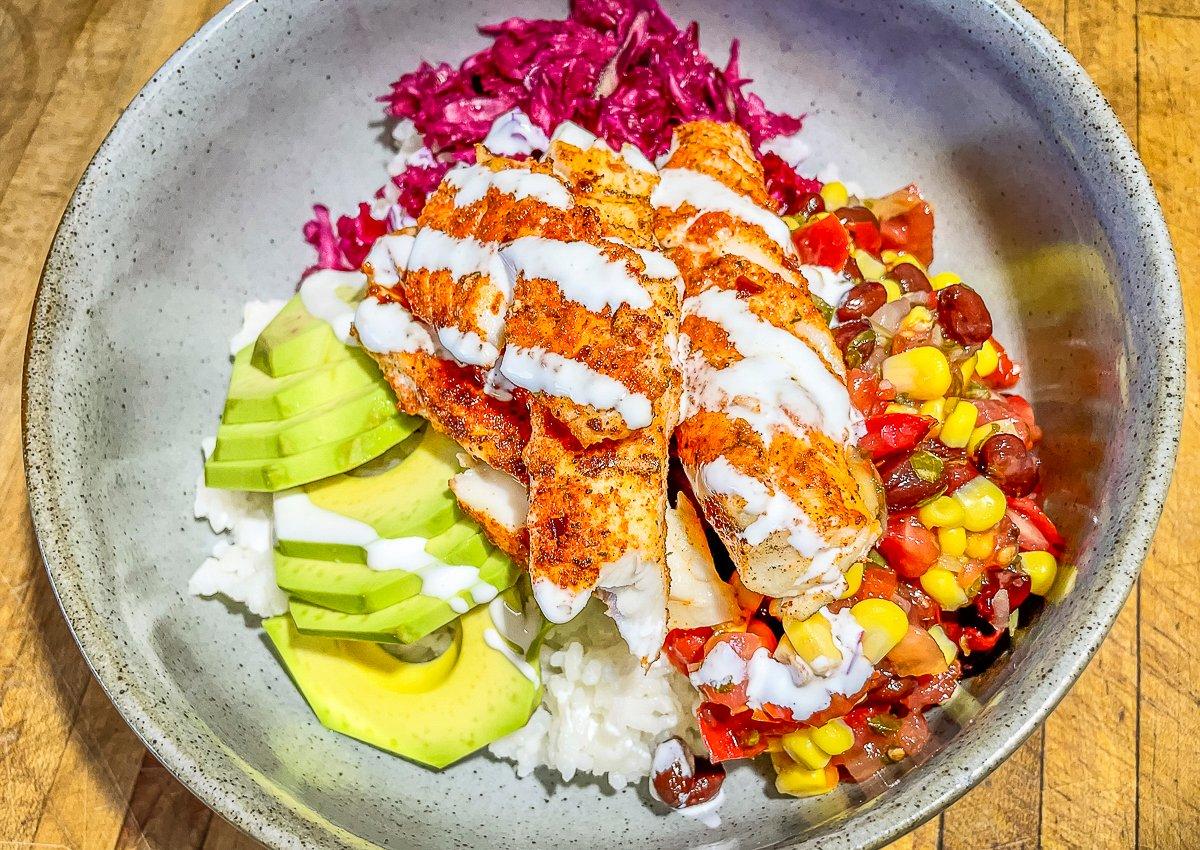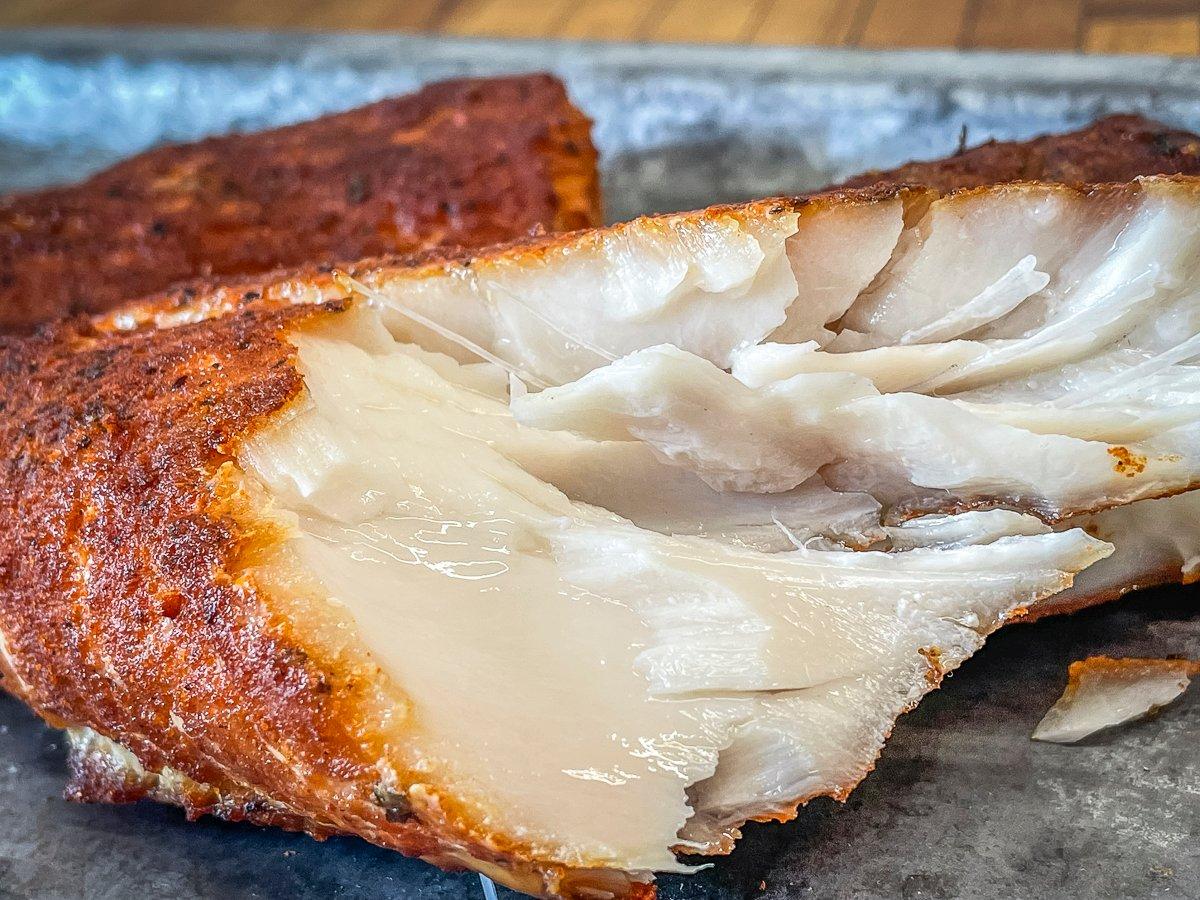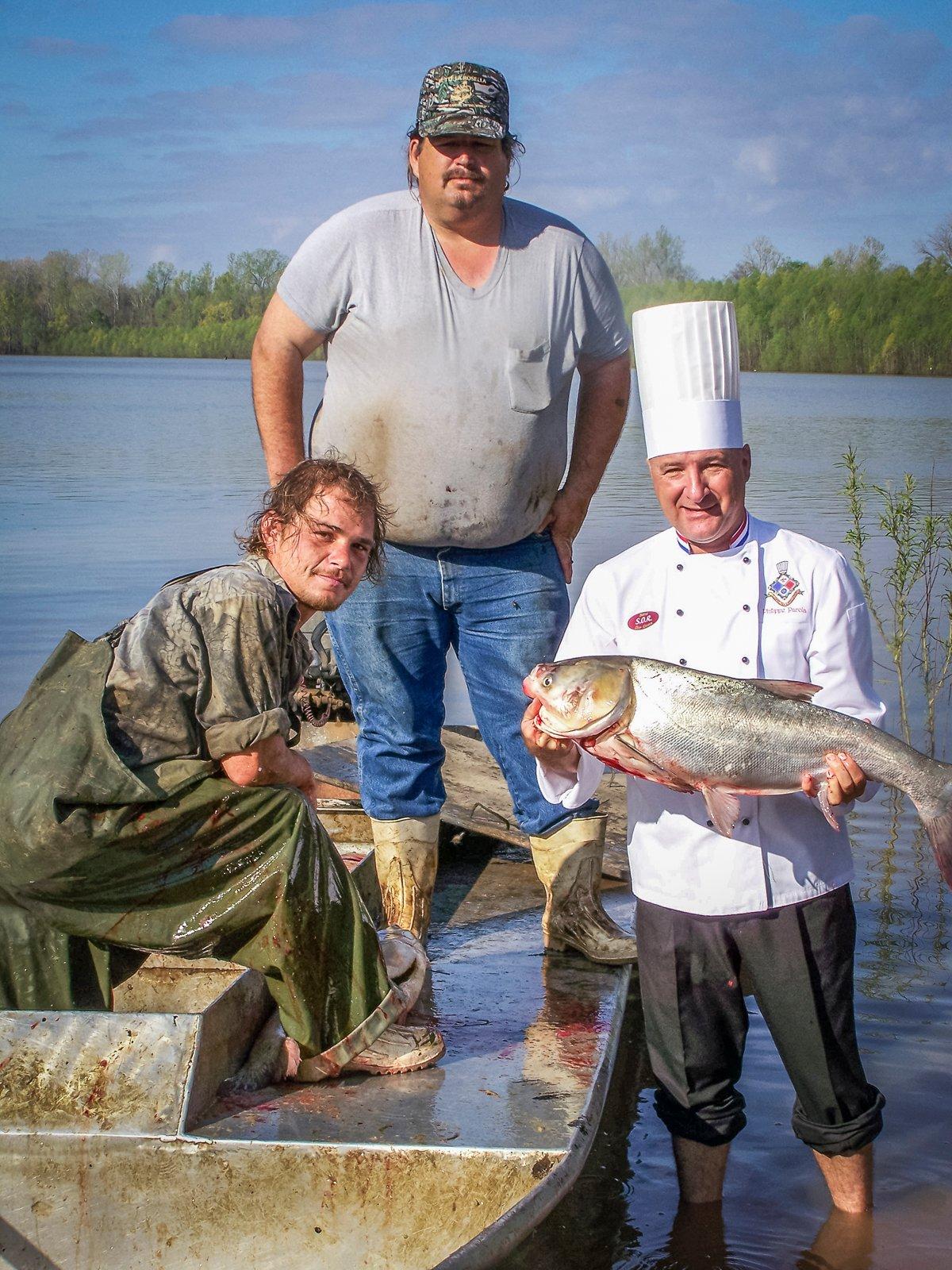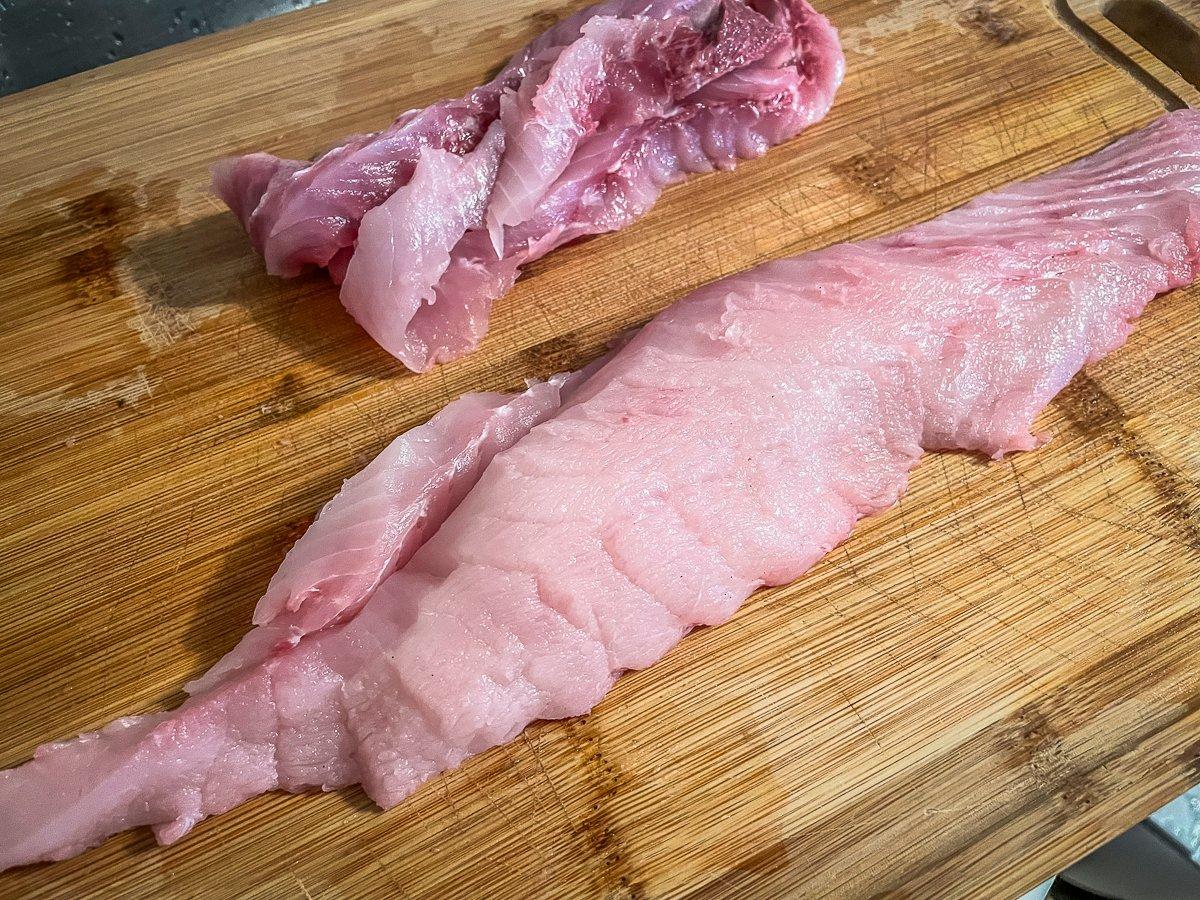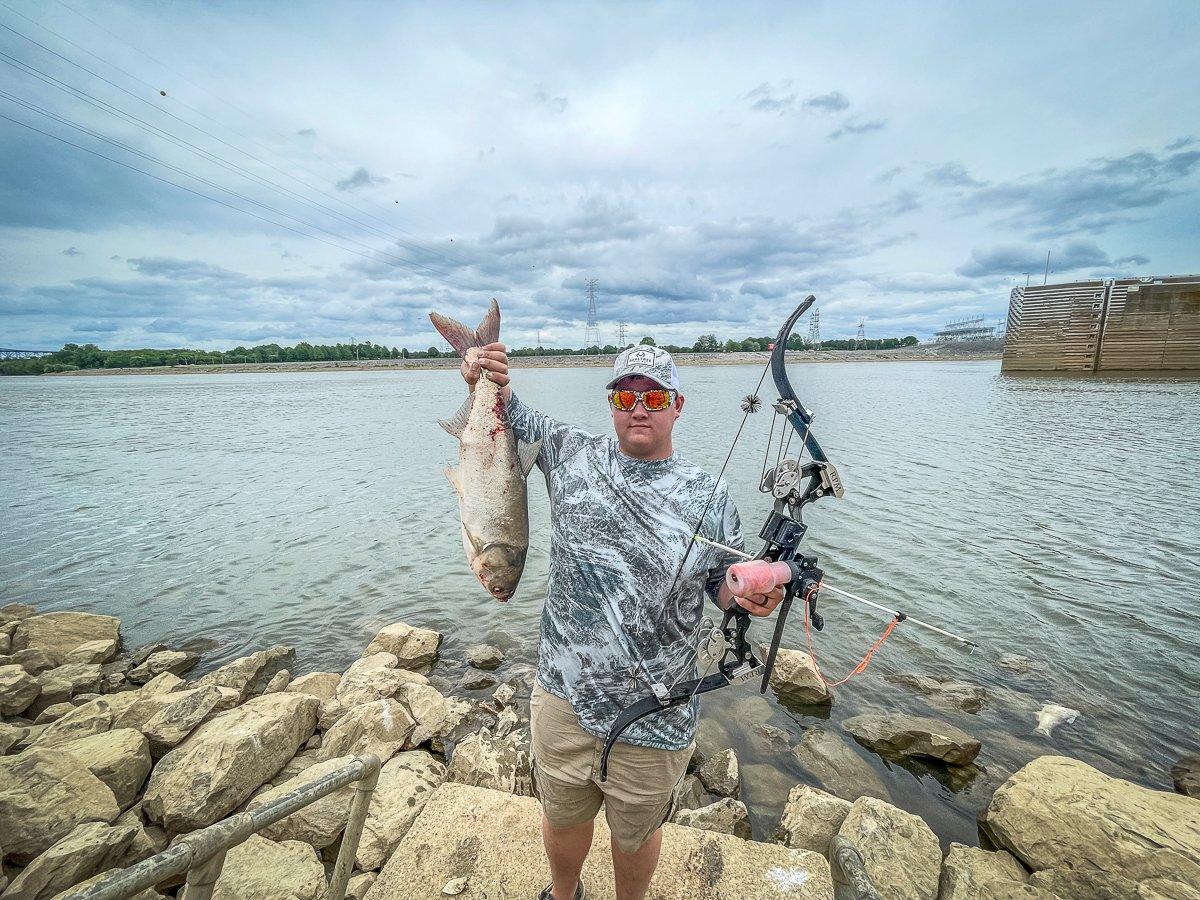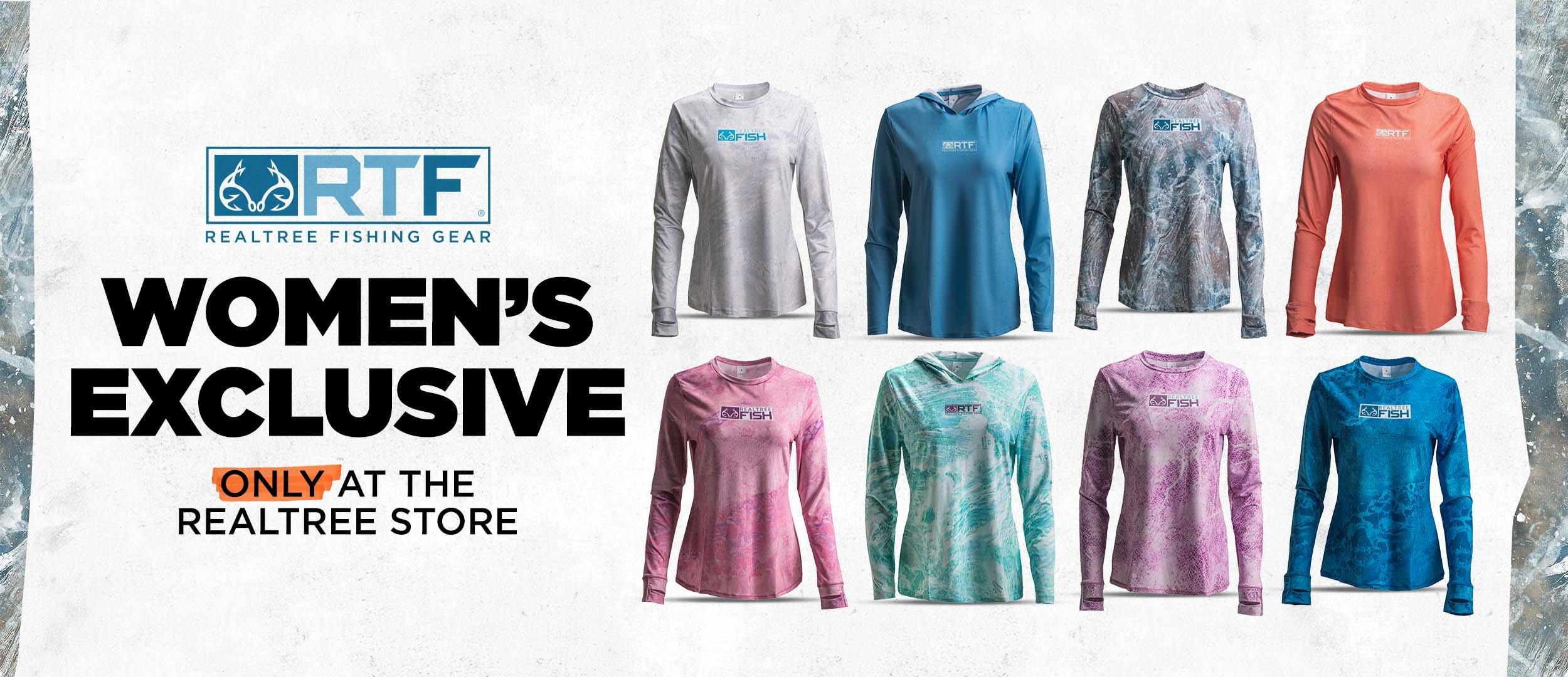A renaming effort might show people just how tasty bighead and silver carp — or copi — can be on the table
Mention eating carp to most people, and they just shake their head sideways, as in NO. The name carp brings with it automatic associations with the common European carp, which was introduced to the United States in the mid 1800s. We've had a lot of time to get to know that fish. What we've learned over all that time is it tends to root around in the bottom murk and mud to find food. And it tastes exactly like what it eats.
Fast forward a little over 100 years. A new type of carp was introduced into American waterways. This one came from Asia and was dubbed with the collective name Asian carp. Americans immediately assumed it had the same muddy, strong flavor sometimes found in the common European carp they were familiar with. They couldn't have been more wrong. While these fish aren't the most attractive around, with a face that seems almost upside down and a layer of slime that sticks to everything it touches, this invasive carp is one of the best tasting freshwater fish that swims.
The Great Carp Escape
The four species of invasive carp - silver, bighead, black, and grass - first came to the U.S. in the late 1960s and early '70s. Popular opinion is that they were imported by Arkansas fish farmers to keep their ponds clean. What many don't know is that the fish was also stocked by many municipalities for use in water treatment plants to meet federal water quality regulations. Ensuing floods washed the fish into drainage ditches. From there, they followed the flow to nearby rivers. In the 50 plus years since, they spread into the Mississippi River Basin and, from there, into most of the central U.S. from the upper midwest all the way down to Louisiana.
The Impact
What does this all this mean to native species of fish? Bighead and silver carp, the most populous and fastest spreading of the four species, are voracious filter feeders, fast-growing, and highly productive. They consume massive amounts of phytoplankton, a food source that is crucial for a number of native species, and therefore have the potential to radically change the way ecosystems work. Josh Tompkins, a Fisheries Biologist with the Kentucky Department of Fish and Wildlife, said, These fish filter amazing amounts of phytoplankton from the water. This is direct competition for native species like buffalo, paddlefish, and gizzard shad, but that same plankton is also the food for newly hatched sport fish like bass.
(Don't Miss: Fishing Drop-Shot Rigs for Big Summer Bass)
According to studies, in parts of the Mississippi and Illinois Rivers, these invasive carp represent up to 75% of the total biomass. Bighead carp can reach up to 100 pounds and consume between 5% and 15% of their body weight per day. Silvers, says Tompkins, while smaller, can consume even more plankton because of their dense, spongy gill structure. Their incredibly fast reproduction rates mean that just a few fish can overwhelm a body of water in a very short period of time. With few natural predators, invasive carp are spreading and taking over waterways at an alarming rate. Incredible efforts are being made to prevent the fish from entering the Great Lakes, where it is estimated that they will have tremendous negative impact on the 7 billion dollar fishing industry.
A Commercial Solution
What do we do to control numbers and slow down the spread? One of the most effective methods so far has been commercial fishing. States like Tennessee are taking an active role to encourage this. Commercial harvest is a key strategy to defend our waters from the impacts and expansion of invasive carp, said Cole Harty, TWRA Aquatic Nuisance Species Coordinator. The Tennessee Wildlife Resources Agency recently announced that fishermen have harvested more than 10 million pounds of carp from state lakes and rivers since 2018. Fisherman are netting carp and being paid through a program known as the Asian Carp Harvest Incentive Program administered by the TWRA. In fact, almost all commercial fishing for the species across the nation currently relies on government incentives, both state and federal, to make the business profitable.
While processing plant locations are growing, most of what they do is process the fish for animal feed, fertilizer, or to export to other countries as a food product. Tompkins reports that similar efforts in Kentucky removed over 8.5 million pounds of carp last year alone, and nearly 20 million pounds since 2015. The efforts may be working. We are getting reports from commercial fishermen that the massive schools of invasive carp are not as common, and fishermen are having to travel greater distances to catch fish, said Tompkins.
The Meat of It All
And that brings us to the meat of the subject. We should be eating these fish. Unlike their sometimes muddy tasting cousins, the meat from silver and bighead carp is firm, white, mild, and flaky. It is often compared to cod in texture. I have grilled, fried, broiled, and steamed both bigheads and silvers and the results are always surprisingly good.
Chilean Sea Bass were once known as toothfish, and Orange Roughy used to be slimehead.
One of the best ways to illustrate the quality of the fish as a food product is to do a blind tasting side-by-side with a more recognized food fish. I've been on both sides of the table, both as a cook and a taster, of numerous blind tastings where bighead and silver carp were served side by side with catfish from the same waters. Participants always overwhelmingly choose the carp. Are they surprised at the results? You bet. Many go in with the preconceived notion that there is no way the carp will taste good. Once they try it, they always come away with a new outlook on the invasive species.
Besides their great flavor, bighead and silver carp have other benefits as well. To start with, they feed high in the water column, away from the bottom mud where mercury and other heavy metals tend to be concentrated. They are also vegetarian, feeding only on plankton, meaning they don't consume smaller fish, another source of mercury, arsenic, and selenium in more common food fish. Invasive carp come in well below USDA acceptable levels on all three heavy metals. That means people in high risk categories, like those under 15 years of age and pregnant women, don't need to limit the amount of fish they eat.
Call 'Em Copi
How do we convince more people to give it a try for the first time to see for themselves? For starters, the name needs to change. Deserved or not, the name "carp" will always have negative connotations as a food fish in the United States. Branding a fish to make it more appealing has worked in the past. Chilean Sea Bass were once known as toothfish, and Orange Roughy used to be slimehead. Renaming attempts for invasive carp have been tried several times in the past. Kentucky Tuna and Silverfin are two examples. But just this month, the largest, most well-financed rebrand of invasive carp has been announced. Funded by the state of Illinois, the new chosen name for the species is "Copi." The Illinois Department of Natural Resources announced the name change on June 22 as part of its push to keep the invasive species from making it into the Great Lakes. Copi is short for the copious amounts of the fish that are "over-consuming the small food items native fish need in their diets to survive," said a department spokesperson.
The name change should help, but chefs and cookbook authors also need to embrace the fish. Copi's mild flesh is a blank slate when it comes to flavor, and chefs are taking notice. Award-winning chef Sara Bradley makes bighead and silver carp a regular part of her menu at her restaurant Freight House in Paducah, Kentucky. She said, While some people expect Asian carp to be muddy-tasting and unpleasant, this is actually a misconception. The Asian carp is a top-feeder filter carp, unlike species such as common carp and catfish that live at the bottom of lakes and spend more time in the mud. Bradley said people have been "constantly surprised" by how pleasant Asian carp tastes. She added these fish are about as fresh as you can get in this part of the country, as they spend only about five hours out of water before being served.
(Don't Miss: Is it OK to Eat Bass?)
Baton Rouge, Louisiana, Chef Philippe Parola is no stranger to battling invasive species by cooking them. Chef Parola has witnessed firsthand the impact the fish is having on his local waters, as well as in midwestern states like Kentucky, Tennessee, and Illinois. He feared for his local brackish bays and their fragile ecosystem, and knew he needed to do what he could to slow the spread. Chef Parola is so impressed with the flavor of both bighead and silver carp that he has taken cooking and serving them a step farther by starting a group to actively process and market the fish as a food product nationwide. His company, Silverfin Group Inc., processes them into value-added products like fish cakes, sticks, and hand pies. His Chef Philippe Silverfin aka Copi products are designed with restaurants and food service providers in mind. We wanted to make an economical, great tasting product that was easily prepared in minutes, and, through several years of experimentation, we feel like we've accomplished that, said Parola.
Despite their excellent flavor, bighead and silver carp do have a big drawback as food. They are a bony fish. Besides the standard spine and rib bone structure found in most freshwater fish, they have an additional set of two rows of unattached Y-shaped bones that run the length of the fish on each side. That means they can't be processed into the large boneless fillets most American consumers tend to prefer.
American consumers are spoiled when it comes to fish. This is the only country not accustomed to eating whole fish off the bone, said Parola. That doesn't mean Copi can't be processed into boneless products. It just means you will end up with four long, thin fillets per fish vs. the more common two large fillets, and the process is more time consuming than with other fish. The Missouri Department of Conservation has a great video that explains the process of cleaning and filleting these carp for the table. You can find it here. With a bit of practice, you can clean these fish nearly as fast as you would any other species of comparable size.
Is there enough of a market for the fish to make a difference? Last year alone, the U.S. imported over 6 BILLION pounds of seafood. According to Chef Philippe, up to 90% of the fish and seafood consumed by the average American is imported. A large percentage of that was raised in polluted waters in countries with little to no oversight when it comes to health and safety standards. If even a small portion of that market was taken by locally grown and processed Copi from clean waters and USDA inspected processing facilities, it would go a long way in slowing the spread of invasive carp as well as providing a low cost, healthy protein source while at the same time improving our native waterways.
While getting Copi to be accepted and served in restaurants and commercial food locations will be a huge step in the right direction, it pales in comparison to the impact that you and I and the 60 million other anglers, many who are near a body of water filled with invasive carp, could have if we started eating the fish on a regular basis. While bighead and silver carp don't readily take a bait or lure, they are easily caught by snagging, netting, or bowfishing.
Just a few hours on your favorite waterway can stock your freezer with exceptional tasting fish. And you might just save our native fisheries in the process.

